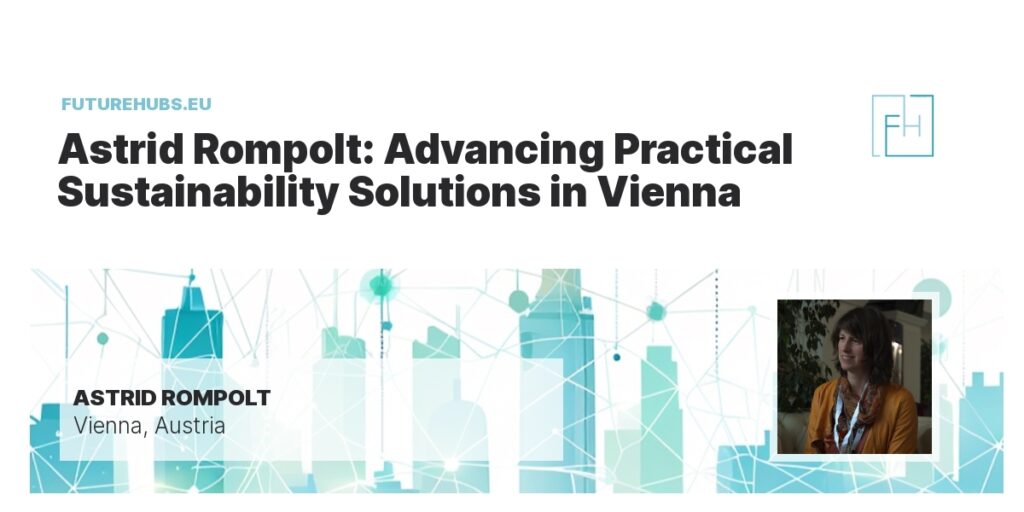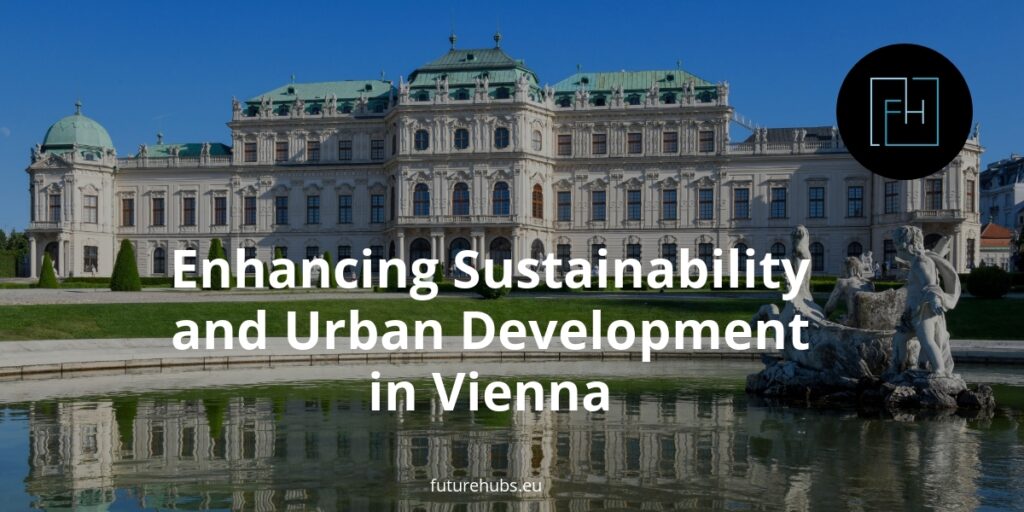Discover the Good News and Charm of Vienna
Vienna’s journey towards sustainable urban living is a remarkable story of innovation, commitment, and community involvement. The city has embarked on several transformative projects aimed at enhancing its environmental sustainability and quality of life for its residents.
With a visionary approach, Vienna is setting the standard for sustainable urban living.
One of the cornerstone initiatives is the Smart City Wien Framework, which was first introduced in 2011. This strategy aims to achieve high quality of life through social and technological innovations while maximizing resource conservation. A significant milestone was the 2022 revision of the Smart City Strategy, setting the ambitious goal of climate neutrality by 2040. The strategy includes comprehensive measures across eleven areas such as mobility, energy supply, and waste management, emphasizing the integration of new technologies and social innovations
Vienna’s commitment to climate neutrality by 2040 is a testament to its forward-thinking policies. The Smart City Wien Framework is a blueprint for achieving high quality of life through sustainable practices.

Vienna’s Sustainable Transport Revolution: Leading by Example
At the Eurocities 2024 conference we had the pleasure of speaking with Astrid Rompolt, a distinguished representative from Vienna. She shared insights on Vienna’s initiatives and the city’s commitment to improving public transport, reducing traffic and pollution, and fostering a more bike-friendly environment.
Astrid Rompolt is a councilor for the Social Democratic Party (SPÖ) in Vienna, representing the Leopoldstadt district, and is also associated with Wiener Wasser, Vienna’s municipal water company. She highlights the importance of integrating technological innovations with community needs.
First Impressions of Romania: A Beautiful Surprise
When asked about her experience in Romania and the conference so far, Astrid Rompolt responded enthusiastically.
“This is my first time in Romania, and I’m impressed so far. I’m really surprised at how beautiful it is. I like Cluj. On the first evening, I took a long walk to the city center and came back on foot, just walking through a very big park filled with greenery and trees.”
Astrid Rompolt
Addressing Traffic and Pollution: Vienna’s Strategies
Discussing Vienna’s approach to traffic and pollution, Rompolt highlighted the city’s achievements in public transport: “In Vienna, we are really good when it comes to public transport. We are currently building another metro line, among many others, continuously improving them. We believe we are getting better and better.”
However, she also pointed out areas that are improving:
“What we need to work on is the bike lanes. Since 2020, we have made significant progress in creating wide, well-connected bike lanes. We have tried to create north-south and east-west connections for bike lanes and also link smaller lanes to these main routes.”

Encouraging Cycling: A Shift in Commuting Habits
When asked if the population is embracing cycling, Rompolt noted:
“I think it is getting better now. Ten percent of people are commuting by bike, and only about 25% are using cars, which is a positive trend. Fewer households own cars now, which is great, and they usually take public transport because it offers really good connections. People also like to walk, and it’s important to ensure that walking is comfortable. Traffic can be very loud, so sometimes reducing the speed limit is suggested to improve the walking experience.”
Vienna’s holistic approach to urban development combines social, environmental, and economic goals to create a livable city for all.
Synchronizing Mentalities Through Eurocities and Communication
Addressing the role of Eurocities in synchronizing urban mentalities, Rompolt emphasized: “It’s up to us, the people and the politicians, to foster this synchronization. We must put effort into communicating with city residents, listening to and understanding them. When we reduce speed limits, add bike lanes, and plant trees in areas that lacked greenery, people notice and appreciate the changes. This makes their surroundings more beautiful and enhances their quality of life.”
The city’s proactive stance on public participation ensures that residents are deeply involved in shaping their urban environment. Vienna’s innovative green bus shelters are a practical example of how urban infrastructure can contribute to environmental sustainability.
Combating Misinformation: Challenges and Strategies
When asked about combating misinformation, Rompolt remarked: “This is one of our biggest challenges. In Austria and Vienna, several newspapers had to let go of employees due to inflation, making it difficult to maintain quality journalism. We, as politicians and municipal administrators, also face fake news. For instance, when we improve public transport by extending train lines, some people oppose it and spread misinformation, such as claiming that trees will be cut down and there won’t be any parking space left. It’s a significant effort to correct these misconceptions.”
She added: “We need to educate children to identify true and false information. We have to begin very early, as soon as people know how to use a tablet or a phone.”
Aspern Seestadt: A Model for Urban Development
One of Vienna’s flagship projects is Aspern Seestadt, an urban lab designed to pilot innovative solutions for urban living. Located in the northeast of the city, this multifunctional urban quarter spans 240 hectares and includes housing, office space, and amenities for over 20,000 residents. Seestadt is both a residential and business hub, emphasizing diversity, inclusion, and cooperation. The project focuses on sustainable mobility, with a goal of 40% cycling and walking, 40% public transport, and just 20% motorized traffic.
Aspern Seestadt stands as a model of multifunctional urban development, blending residential and commercial spaces with ample green areas.
BRISE-Vienna: Transforming Public Services with Digital Innovation
The BRISE-Vienna project showcases how integrating digital innovation can transform public services. By involving municipal employees from the outset, Vienna ensures that new technologies and service delivery methods are effectively implemented. This approach minimizes resistance and maximizes the benefits of digital tools, leading to lasting improvements in urban management and citizen engagement

Vienna’s Climate Teams: Community-Driven Environmental Action
Vienna’s Climate Teams initiative involves local communities in climate action projects. Implemented in six districts, the program encourages residents to propose and develop projects that address local environmental challenges. This community-driven approach not only fosters grassroots innovation but also strengthens the city’s overall climate resilience (Eurocities – Home).
By fostering a culture of sustainability, Vienna is not only addressing current environmental challenges but also paving the way for future generations. Astrid Rompolt underscores the importance of community-driven initiatives in achieving Vienna’s ambitious climate goals.
Vienna continues to set an example in sustainable urban development through its innovative projects and community-focused strategies. From enhancing public transport and cycling infrastructure to pioneering digital transformations in public services, Vienna remains at the forefront of creating livable, sustainable cities.
Astrid Rompolt’s insights highlight Vienna’s proactive steps towards sustainable urban development. The city continuously engages with and educates the public. Vienna excels in public transport and cycling infrastructure. The city also combats misinformation effectively. Vienna sets an example for cities striving for sustainability and improved quality of life.
Read more Vienna relate Good News!
External Sources: Smart City Wien, SpringerLink, Portico.